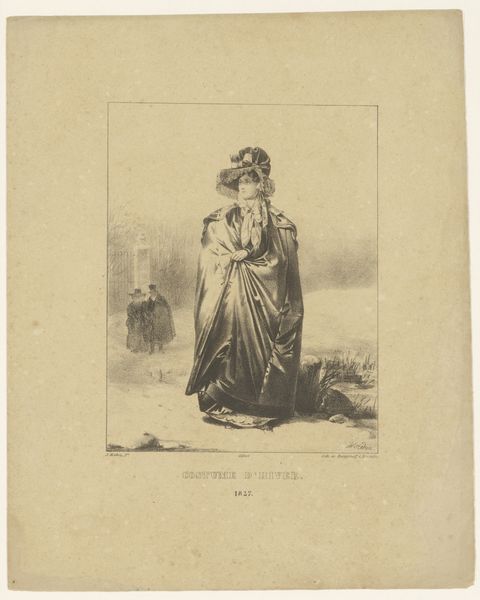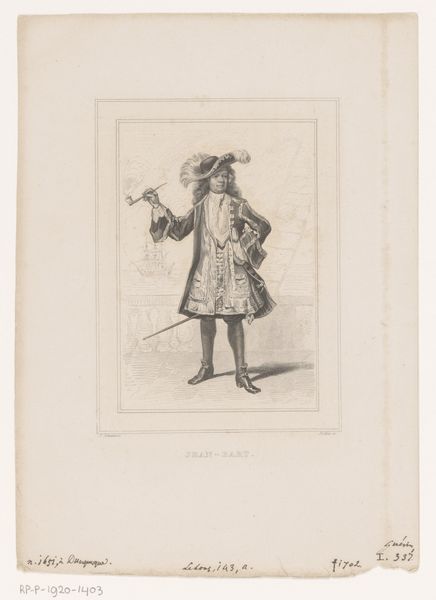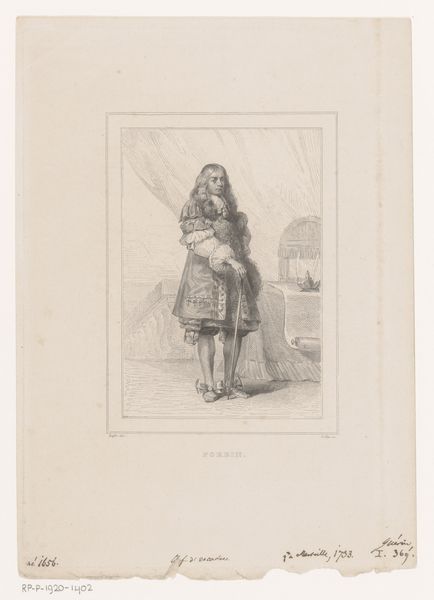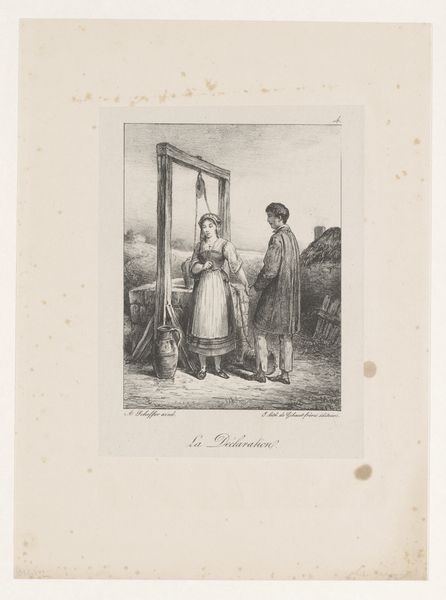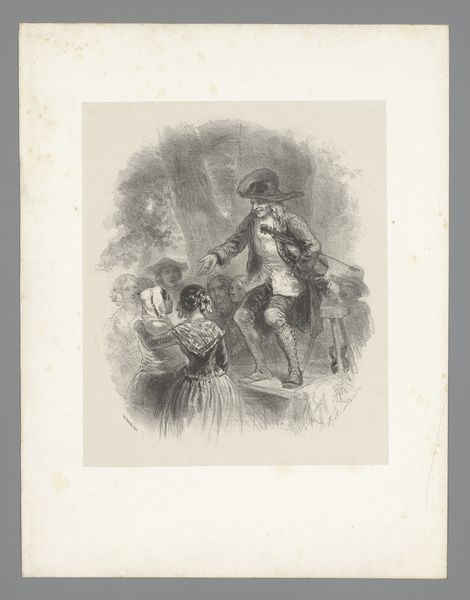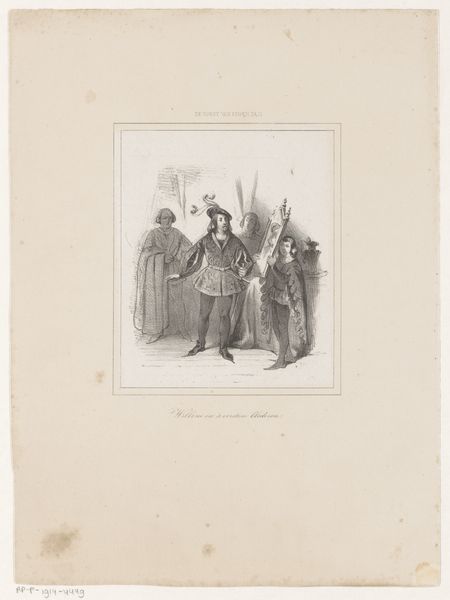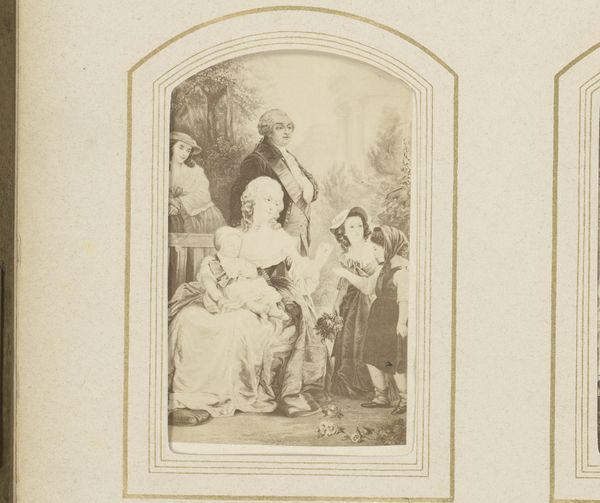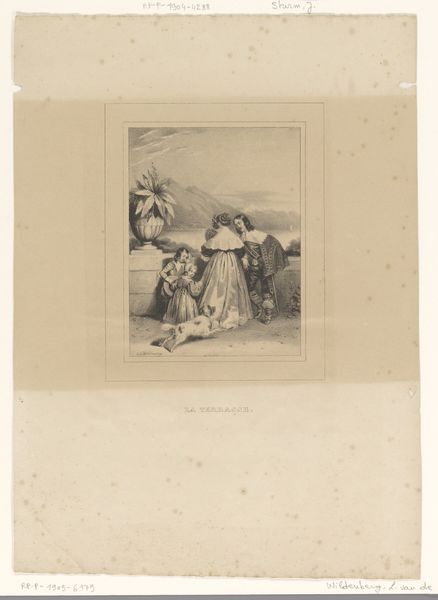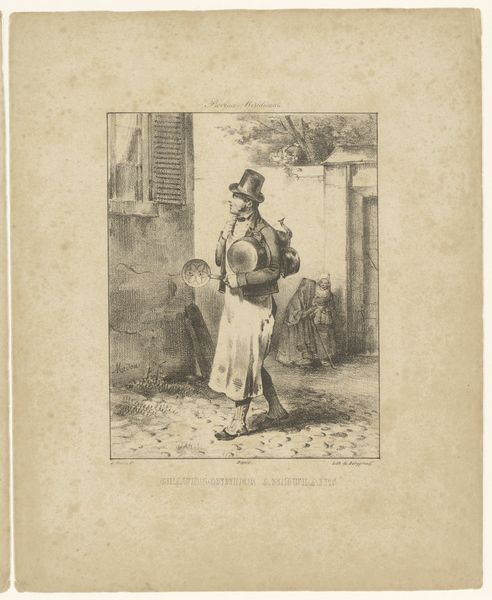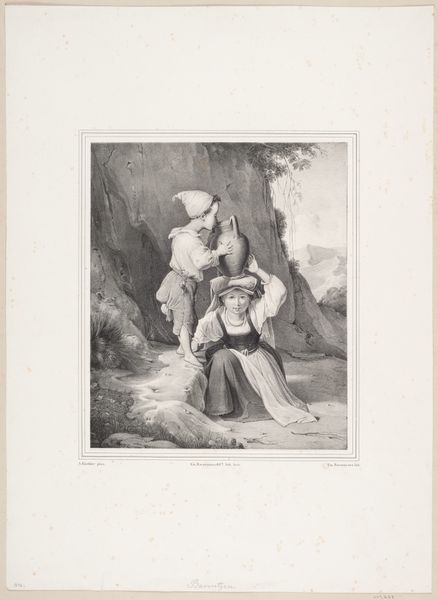
print, etching
#
portrait
# print
#
etching
#
history-painting
Dimensions: height 247 mm, width 174 mm
Copyright: Rijks Museum: Open Domain
Curator: Take a look at this print, "Portret van François de Vendôme van Beaufort," an etching done between 1835 and 1837 by Victor Florence Pollet. It resides here at the Rijksmuseum. Editor: There's a rather haughty air about him, isn't there? The feathered hat, the elaborate sleeves... he seems so utterly sure of himself. It’s an interesting choice for an etching. It’s a study in greys and whites that has a sort of cool reserved nature. Curator: Indeed. He strikes a pose, quite the man of stature with what I presume is some cannon apparatus sitting idly at his side. Given Beaufort's role as a military figure during the Fronde, it emphasizes the weight and symbolism embedded in his image. It’s not just a likeness. Editor: Cannon at his side and foot! A subtle assertion of power and control, wouldn’t you agree? In portraiture, elements placed beside or beneath a subject often carry subliminal weight; they echo themes central to their existence and role. The cannon becomes an emblem representing his position, perhaps hinting at turbulent events defining his leadership or struggles that made him, like a symbol of the weight of governance he carried. Curator: Pollet had a mastery of light and shadow, it's striking to see in an etching. Observe how light defines Beaufort's features but shadows hint at complexity in his demeanor. There are also elements of costume and military posture that were meant to remind the contemporary viewer about his status as a man who died defending France from the Turks during the Siege of Candia. Editor: Absolutely. Light, here, works like an active player to reveal what's outwardly shown and concealing layers hidden below skin deep: his role etched boldly in time. In these monochromatic mediums where absence tells equally as presence – everything relies on what’s made obvious or left obscured… the unseen undercurrent shaping perspective of his figure completely shifts based on those shadowy bits tucked away just outside brightness’ reach. That's the magic inherent! Curator: I find it rather inspiring when historical portraits offer such fertile grounds for reinterpretation... Editor: Couldn't agree more; this fellow indeed evokes questions that linger well beyond their era. What unseen weights mold those prominent stances captured for eternity? Makes you want delve deeper inside all past accounts for unravelings, you know?
Comments
No comments
Be the first to comment and join the conversation on the ultimate creative platform.

